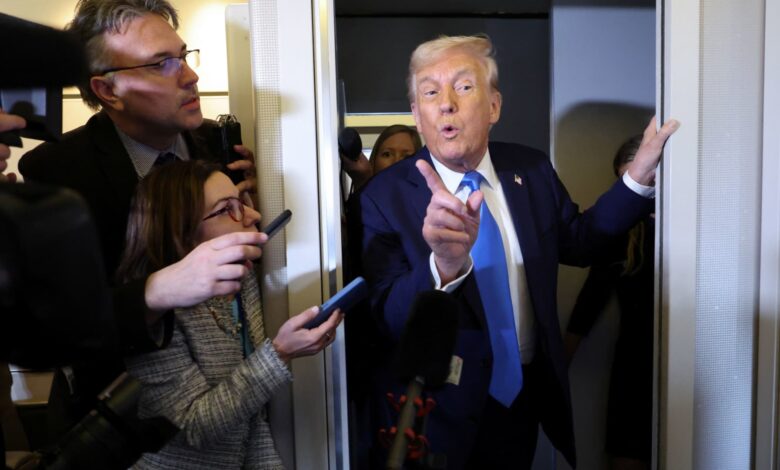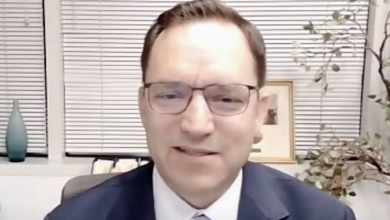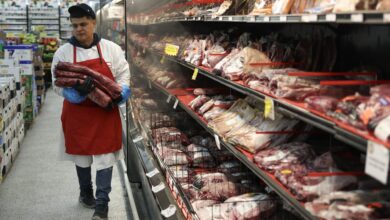First-quarter GDP growth will be just 0.3% as tariffs stoke stagflation conditions, says CNBC survey

U.S. President Donald Trump speaks to members of the media aboard Air Force One before landing in West Palm Beach, Florida, U.S., March 28, 2025.
Kevin Lamarque | Reuters
Policy uncertainty and new sweeping tariffs from the Trump administration are combining to create a stagflationary outlook for the U.S. economy in the latest CNBC Rapid Update.
The Rapid Update, averaging forecasts from 14 economists for GDP and inflation, sees first quarter growth registering an anemic 0.3% compared with the 2.3% reported in the fourth quarter of 2024. It would be the weakest growth since 2022 as the economy emerged from the pandemic.
Core PCE inflation, meanwhile, the Fed’s preferred inflation indicator, will remain stuck at around 2.9% for most of the year before resuming its decline in the fourth quarter.
Behind the dour GDP forecasts is new evidence that the decline in consumer and business sentiment is showing up in real economic activity. The Commerce Department on Friday reported that real, or inflation-adjusted consumer spending in February rose just 0.1%, after a decline of -0.6% in January. Action Economics dropped its outlook for spending growth to just 0.2% in this quarter from 4% in the fourth quarter.
“Signs of slowing in hard activity data are becoming more convincing, following an earlier worsening in sentiment,” wrote Barclays over the weekend.
Another factor: a surge of imports (which subtract from GDP) that appear to have poured into the U.S. ahead of tariffs.
The good news is the import effect should abate and only two of the 12 economists surveyed see negative growth in Q1. None forecast consecutive quarters of economic contraction. Oxford Economics, which has the lowest Q1 estimate at -1.6%, expects a continued drag from imports but sees second quarter GDP rebounding to 1.9%, because those imports will eventually end up boosting growth when they are counted in inventory or sales measures.
Recession risks rising
On average, most economists forecast a gradual rebound, with second quarter GDP averaging 1.4%, third quarter at 1.6% and the final quarter of the year rising to 2%.
The danger is an economy with anemic growth of just 0.3% could easily slip into negative territory. And, with new tariffs set to come this week, not everyone is so sure about a rebound.
“While our baseline doesn’t show a decline in real GDP, given the mounting global trade war and DOGE cuts to jobs and funding, there is a good chance GDP will decline in the first and even the second quarters of this year,” said Mark Zandi of Moody’s Analytics. “And a recession will be likely if the president doesn’t begin backtracking on the tariffs by the third quarter.”
Moody’s looks for anemic Q1 growth of just 0.4% that rebounds to 1.6% by year end, which is still modestly below trend.
Stubborn inflation will complicate the Fed’s ability to respond to flagging growth. Core PCE is expected at 2.8% this quarter, rising to 3% next quarter and staying roughly at that level until in drops to 2.6% a year from now.
While the market looks to be banking on rate cuts, the Fed could find them difficult to justify until inflation begins falling more convincingly at the end of the year.



